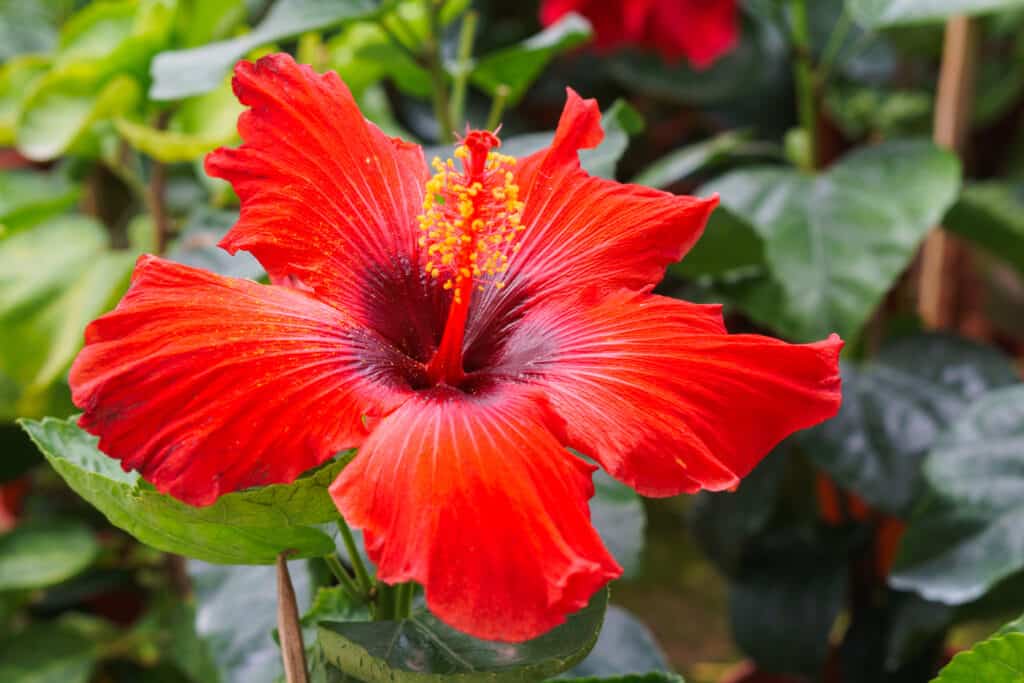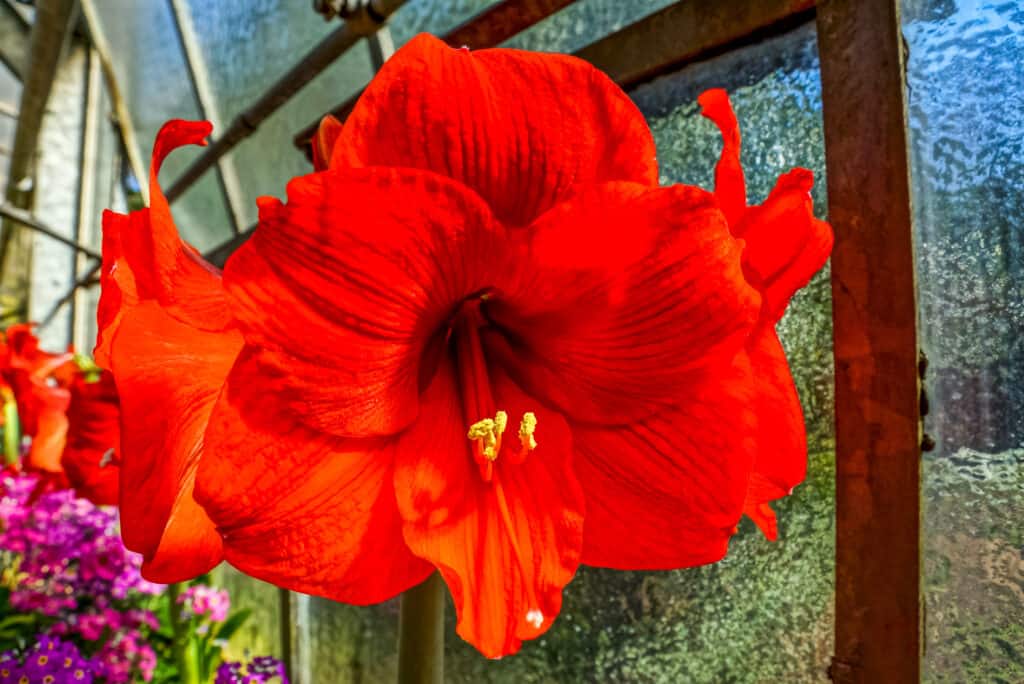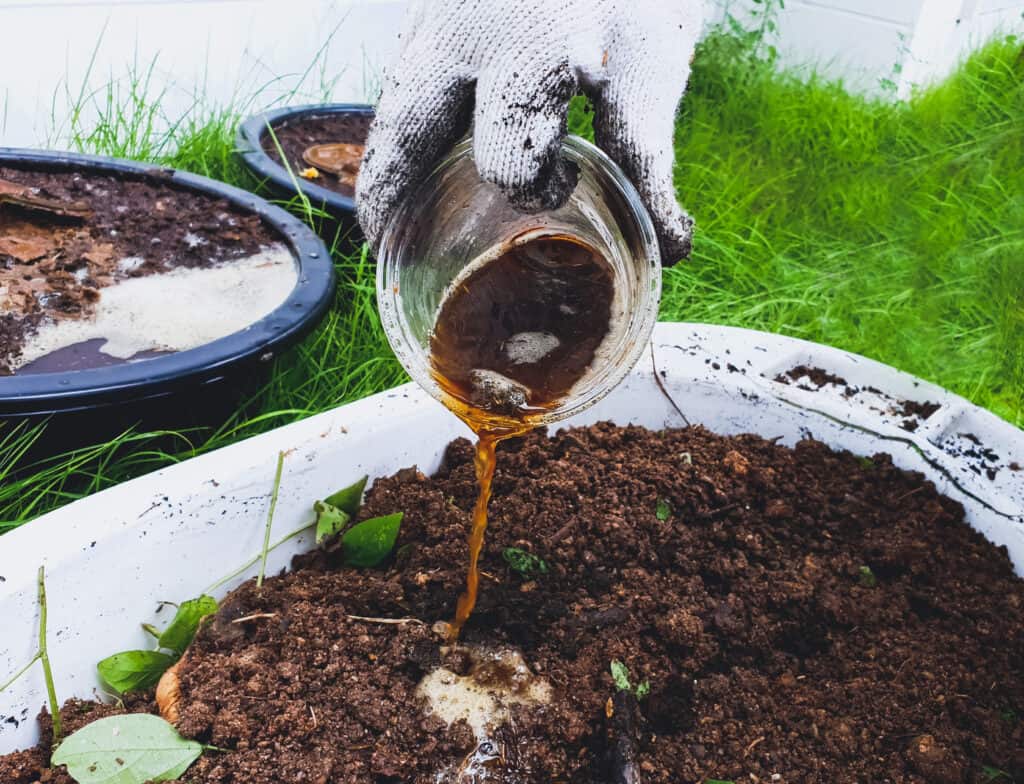Hibiscus are popular flowering shrubs with a myriad of colored trumpet flowers that pollinators and tortoises love, but why do some die over winter when others don’t? Let’s find out if hibiscus is a perennial or an annual. The answer depends on where you live!
Hibiscus: Perennial or Annual?
Gardeners get confused over whether hibiscus is perennial or annual and with good reason! There are actually two hibiscus varieties – hardy hibiscus and tropical hibiscus.
Both types are perennial, but tropical hibiscus isn’t able to withstand cold winters so it’s grown outside as an annual in cold areas.
What Does Perennial Mean?
Plants that live for more than three years are called perennials. They can be evergreen or deciduous (they drop foliage in winter), but they grow and re-flower each year.
Annual plants live for one year, and biennial plants live for two years. Hibiscus is perennial because it grows back each year if the climate is warm enough.
What Is Hibiscus?
Hibiscus is a beautiful flowering plant in the mallow Malvaceae family. There are hundreds of species that grow in most climates from temperate to tropical areas.
Hardy hibiscus (Hibiscus syriacus) is native to China but has spread across the world, although some botanists argue that it actually originates from India and the South Pacific Islands, but because European travelers picked it up in China, it’s assumed a Chinese native.
According to Kew the tropical hibiscus (Hibiscus rosa-sinensis) is native to Vanuatu in the South Pacific ocean.

Hibiscus is native to China but is now prominent worldwide.
©MajestiX B/Shutterstock.com
What Is Rose of Sharon?
Both hardy and tropical hibiscus are also called the Rose of Sharon and their large, scene-stealing pink, red, blue, orange, peach, yellow or purple flowers are very popular for landscaping or brightening up decks and balconies.
Tea made from hibiscus petals is a popular worldwide beverage and it’s been used in Indian ayurvedic medicine for thousands of years. In the Hindu religion, a red hibiscus is the goddess Kali’s flower. Today hibiscus is studied for its effects on hypertension.
How To Tell The Difference Between Hardy and Tropical Hibiscus
The most obvious difference is that tropical hibiscus dies during winter because it can’t tolerate cold temperatures.
Here’s how to tell before anything dies!
Hardy Hibiscus (Hibiscus syriacus)
- Large single flowers
- Usually red, white, lavender, pink
- Heart-shaped matte foliage
Tropical Hibiscus (Hibiscus rosa-sinensis)
- Pink, orange, and yellow single flowers
- Dark green glossy foliage
Hibiscus Is A State Flower (of many states!)
Yellow hibiscus (Hibiscus brackenridgei) is Hawaii’s state flower. Tahitian and Hawaiian girls traditionally wear a hibiscus flower behind their left ear if they are single and their right ear if they are married.
Hibiscus is also the national symbol of Haiti, the Solomon Islands, and Niue a small island country in the south Pacific ocean, whereas Hibiscus syriacus is South Korea’s national flower.
How Do You Take Care Of Hibiscus
Both hardy and tropical hibiscus have the same care requirements, the difference is tropical hibiscus won’t survive much below 55 degrees (12 celsius).
Hibiscus like a bright spot but they burn in direct sunlight, so a slightly shaded but warm position is best. They don’t have a soil preference so long as it’s well-drained and fertile. Many gardeners grow hibiscus in a container for the reason coming up next!
Will Hibiscus Survive Winter?
Hardy hibiscus survives the winter in growing zones four to nine, but tropical hibiscus will only cope with winter in zones ten to twelve.
Hardy hibiscus is deciduous so it’ll lose all its foliage and die back to a woody stem, but don’t worry it will grow back to its full height the following spring and summer.
Tropical hibiscus is evergreen but in cold zones, it will die unless it’s brought indoors as a houseplant.
How To Overwinter Hibiscus
Make sure your hardy hibiscus is growing in well-drained soil because although it can cope with low temperatures it hates soggy, rotting roots. Perennial hibiscus benefits from a thick layer of organic mulch around its roots over winter to protect its roots and keep the rain off.
Any tropical hibiscus you want to save should come indoors well before any frost looms on the forecast! Give it a sunny window-side seat and avoid watering it unless the compost dries out. The very best place to overwinter hibiscus is a steamy bathroom because they love humidity!
Alternatively, you can treat tropical hibiscus like an annual. Just leave it outside to die off and replace it with a new one the following year.

Putting a hibiscus in a greenhouse is a good way to overwinter it.
©Sina Ettmer Photography/Shutterstock.com
Should You Deadhead Hibiscus?
Yes, deadheading hibiscus encourages re-flowering and improves its overall look. Just gently snap off the spent flower heads and all the plant’s energy goes into making new beautiful flowers instead of seeds.
Is Hibiscus Toxic To Cats and Dogs?
No, hibiscus isn’t toxic. The ASPCA lists it as safe for dogs, cats, and horses. It’s also excellent tortoise food! Tortoises love hibiscus flowers and leaves, especially hardy hibiscus because the leaves are softer.
How To Propagate Hibiscus
If you’re growing hibiscus as an annual not a perennial then one of the best ways to get new plants is propagation -simply root a cutting!
Both types of hibiscus are propagated this way:
- Choose a piece of new softwood growth from the current year
- Cut a 4-6 inch length just below a leaf
- Remove all the foliage and flowers, but leave two leaves at the top
- Push the cutting into a mix of perlite and seed compost
- Keep it damp and warm
If you’re rooting tropical hibiscus, but struggling to get any growth, follow the above steps and cover the cutting in a clear plastic bag to trap tropical-style humidity and moisture. Don’t let the leaves touch the bag because this can lead to rot.
It’ll take around eight weeks before you spot new growth. Wait until the following spring before planting it outside.
Why Isn’t My Hibiscus Flowering?
Both species of hibiscus are one of the latest shrubs to flower. Sometimes they hold on until June. If it’s early in the year, be patient!
Otherwise, move the hibiscus to a warmer spot, water it more frequently, and try a multi-purpose liquid fertilizer.

If your hibiscus isn’t flowering, try using liquid fertilizer.
©The little paint/Shutterstock.com
Try Growing Perennial Hibiscus
Both varieties of hibiscus are perennials, not annuals that will live for many years in the right conditions. Try bringing your tropical peach, yellow, or orange hibiscus inside for winter to keep it alive, but if you really don’t have the room, take cuttings and never buy another hibiscus again!
Up Next
The photo featured at the top of this post is © APCat/Shutterstock.com
Sources
- , Available here: https://www.sciencedirect.com/science/article/abs/pii/S0378874198001573?via%3Dihub
- , Available here: https://powo.science.kew.org/taxon/urn:lsid:ipni.org:names:560890-1#distributions
- , Available here: https://powo.science.kew.org/taxon/urn:lsid:ipni.org:names:560756-1#distributions
- , Available here: https://www.aspca.org/pet-care/animal-poison-control/toxic-and-non-toxic-plants/hibiscus
- (1970)
Thank you for reading! Have some feedback for us? Contact the AZ Animals editorial team.






